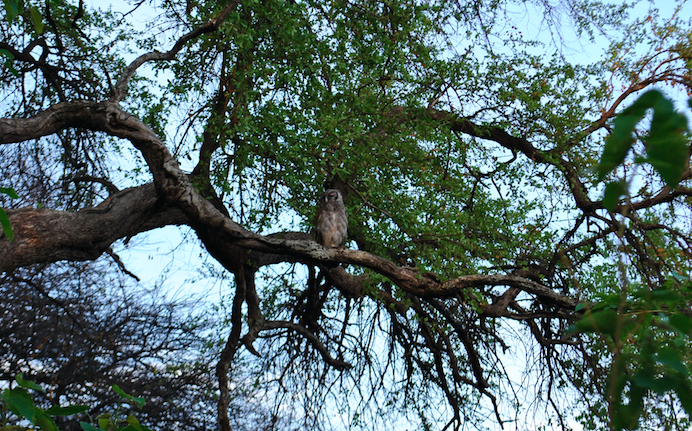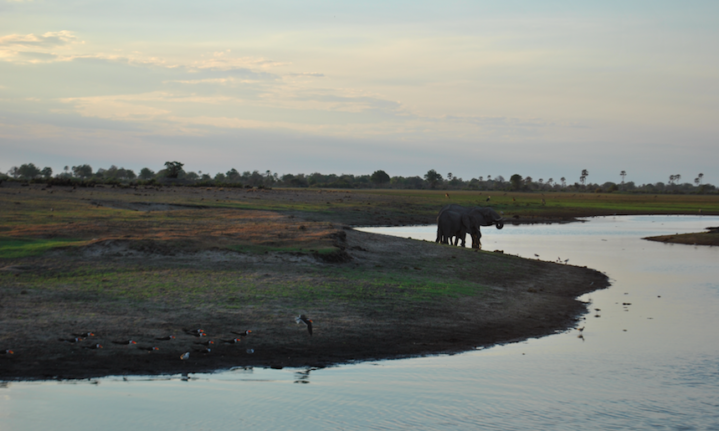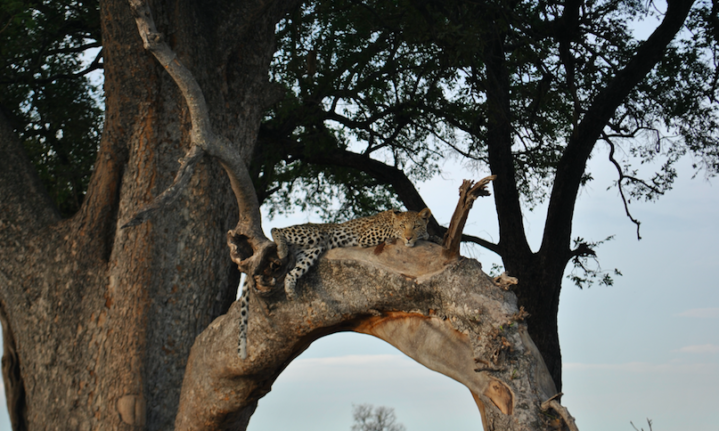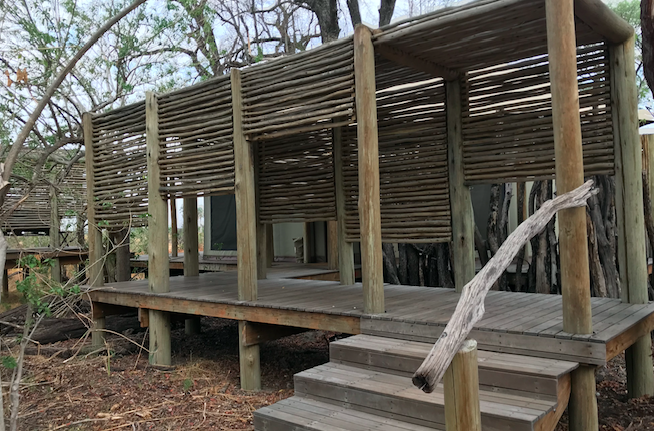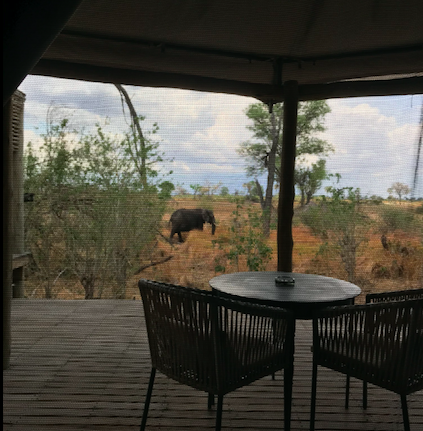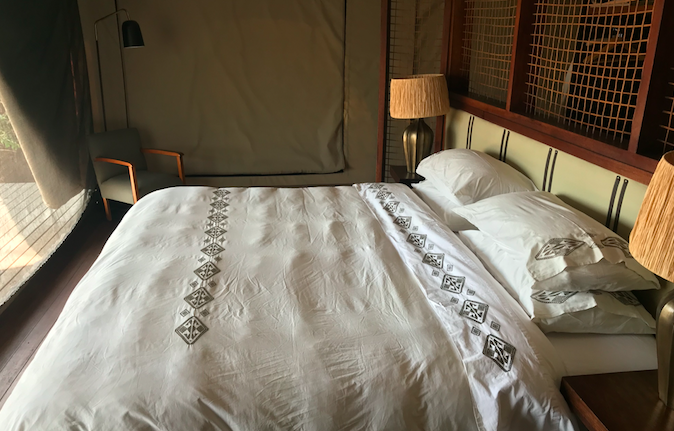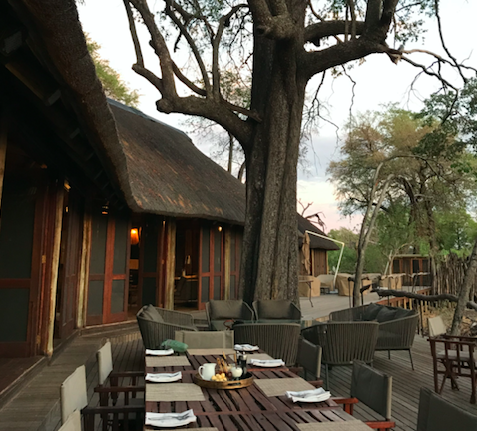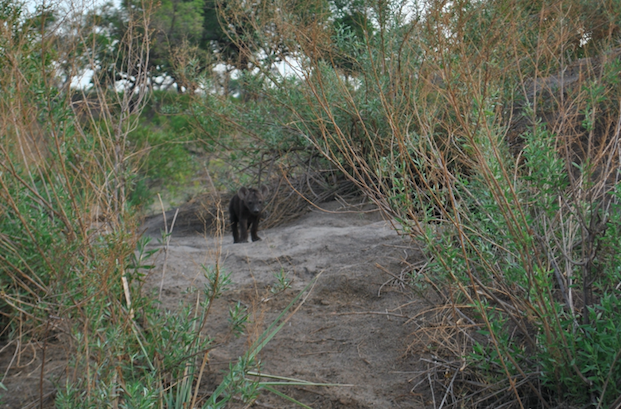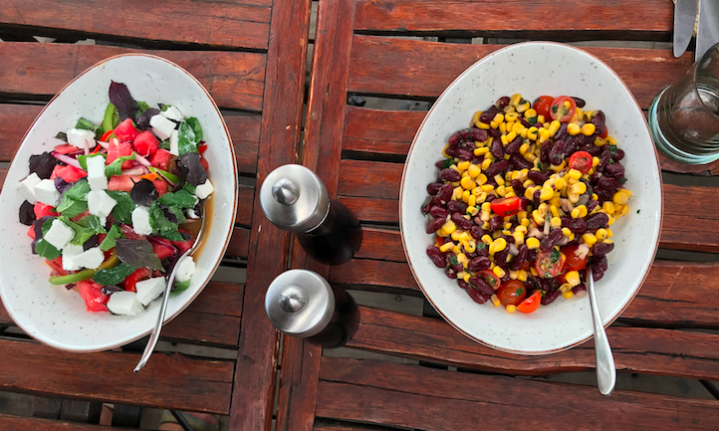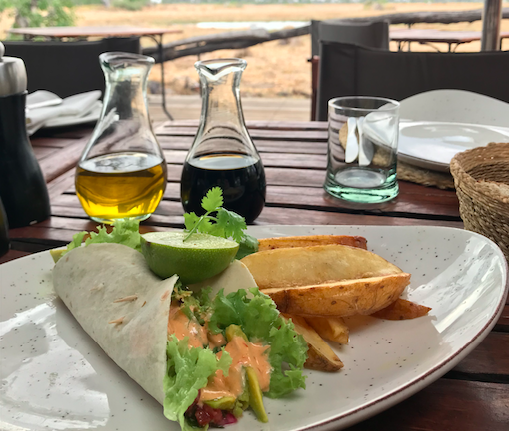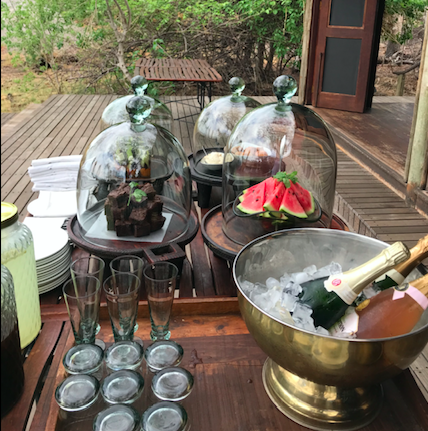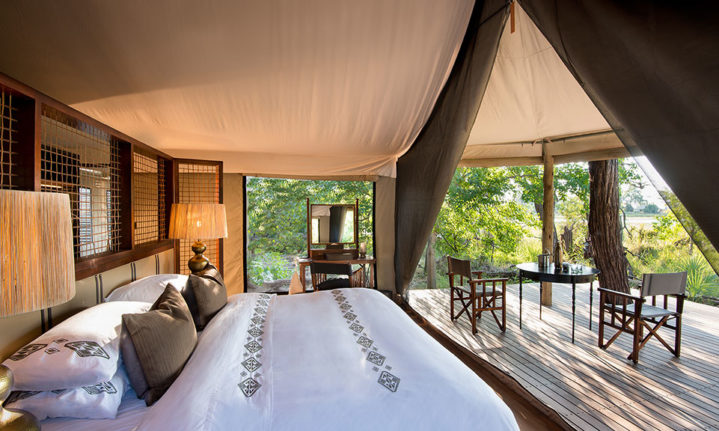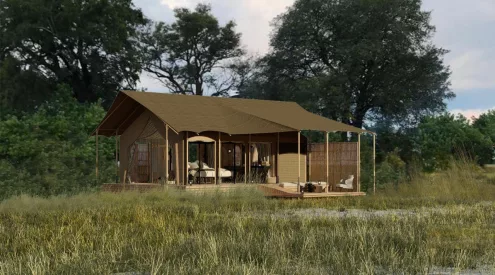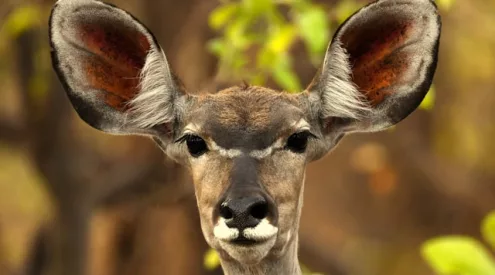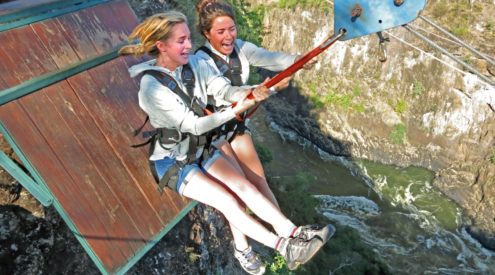Underneath a canopy of ebony trees, blended into its surrounds, are nine perfectly-positioned tents belonging to &Beyond’s Nxabega Okavango Tented Camp. A leader in the touring and lodge industry, &Beyond has a holistic approach to its operations. Founded in 1991 and based in South Africa, the company has 19 properties across South Africa, Botswana, Namibia, Mozambique, Kenya, Tanzania, Asia and South America.
Having visited in early December, the area was dry, yet far from desolate, despite the extreme drought Botswana has been facing. The unfenced camp was teeming with wildlife. From the resident herd of ellies, to the hippo who rarely leaves his watering hole, there is always something to marvel over at this spectacular camp. Upon arrival, I was greeted by an array of smiling faces and a symphony of voices: the Nxabega team. As I made my way to the main deck area, I spotted Africa’s largest owl, the Verreaux’s eagle-owl peering down at me.
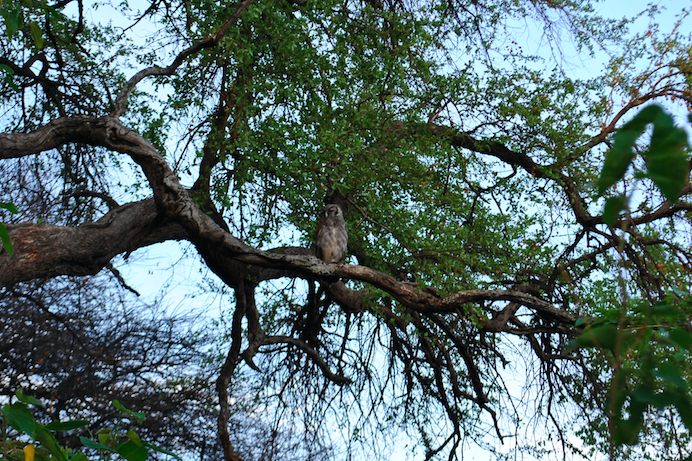
The unmistakable pink eyelids of Africa’s largest owl, the Verreaux’s eagle-owl. Image: Imogen Searra
Situated in a 25,000-hectare wildlife concession that borders the Moremi Game Reserve, Nxabega is the epitome of luxury in the bush. With a strong focus on preservation and conservation, Nxabega relies on sustainable energy and 70% of its power comes from the glorious African sun. There are however backup generators in case of emergency. The camp has also made impactful shifts away from plastic packaging, such as only offering reusable glass bottles to guests.
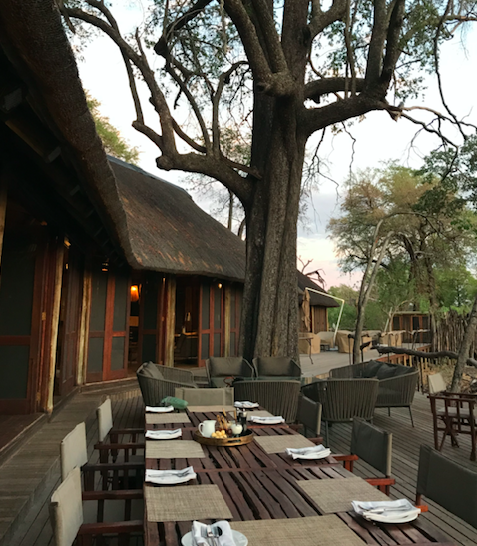
The deck area where breakfast, lunch and high tea are enjoyed. Image: Imogen Searra
Nxabega’s open-plan rooms perfectly blend the wildness of the Okavango with elegance and sophistication. High ceilings, a massive bathroom, an extra-large king-sized bed, crisp white linen, enormous cupboards, a bar area, a double vanity and a captivating view are all part of the appeal. The outdoor shower, spacious deck and swing chair add the final touch to this lavish tent.
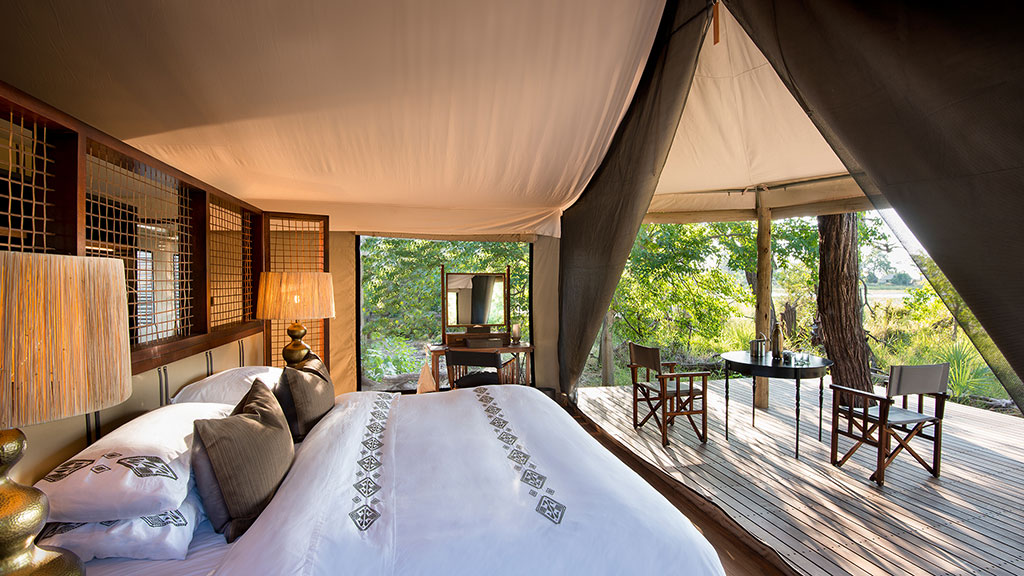
The XL king-sized bed overlooking the deck area. At night I only zipped the mesh doors of my tent closed so as to wake up with the first light. Image credit: &Beyond
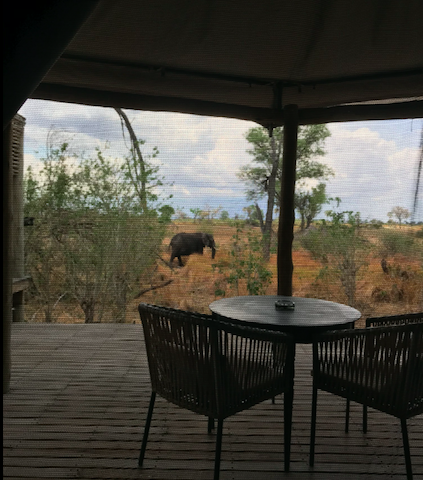
There’s an elephant on my stoep. The view from the bedroom through the mesh deck doors. Image: Imogen Searra
Professional, knowledgeable and friendly guide, Gee, and tracker Ollie, reaffirmed my love for the bush and my respect for those who have made a career out of it. This magnetic pair have an endless wealth of knowledge and knew the answers to every question I could throw their way. There is so much to learn about Botswana’s terrain and wildlife and these two men are the greatest teachers. After about 15 minutes of tracking a sub-adult leopard, we found her resting atop a tree branch. The site of this magnificent, elusive animal starring nonchalantly at our vehicle is a moment etched in my memory forever. After the afternoon drinks overlooking a floodplain teeming with life, we headed back to camp for dinner.
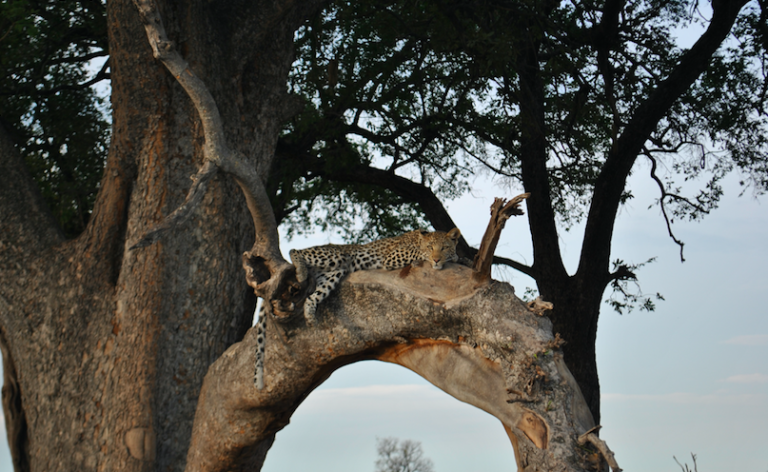
A female leopard lazily enjoying golden hour. Image: Imogen Searra
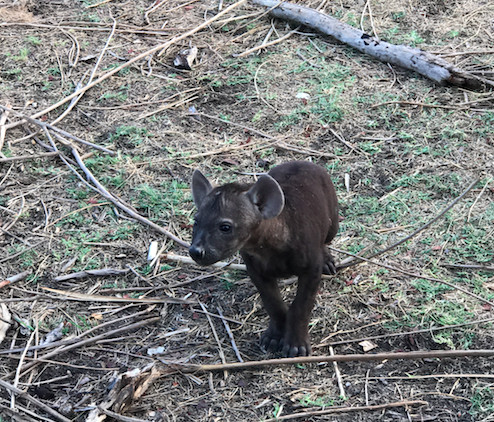
Hyena cubs are very curious and this little one came right up to the tyres of the vehicle. Image: Imogen Searra
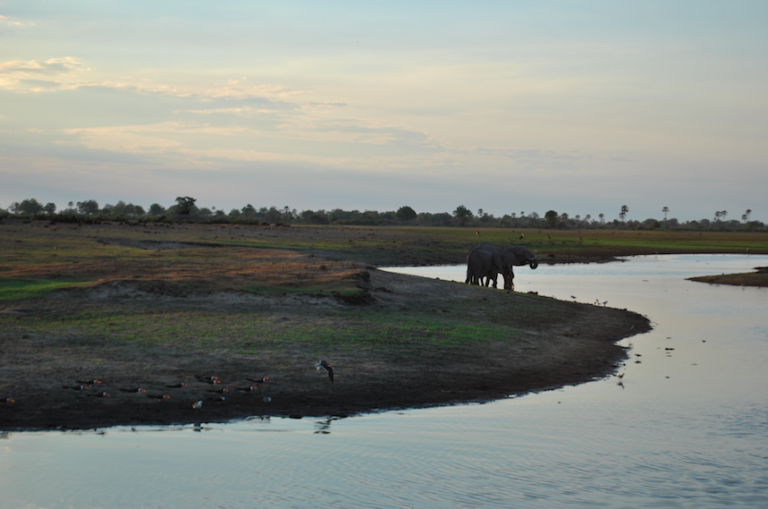
Ellies having a drink alongside a flock of African skimmers. Image: Imogen Searra
When we arrived back at camp, I was greeted by the Nxabega staff, and cool face towels to help freshen up for the evening. Dinner was spent in the boma area, where the other guests and I were treated to an array of traditional singing and dancing. The food at Nxabega is otherworldly and the vegetarian options were mouthwatering. The lunch and dinner menu highlights for me included a sweetcorn soup, vegetarian tacos, an array of fresh salads and a pineapple and lemongrass sorbet.
Breakfast is served before your morning game drive, allowing you to spend first light with the diurnal wildlife emerging from their slumber. If you’re lucky, you may catch a common genet on its way to sleep.
Lunch is then served at around 1:30 pm and there is ample time for an afternoon siesta post-meal. Your afternoon slumber may be interrupted by the resident ellie herd, noshing on the vegetation around your tent. At around 4:30 pm high tea is served. Chocolate brownies, sliced watermelon, ice coffee, champagne and an array of savoury eats are laid out before embarking on the evening drive.
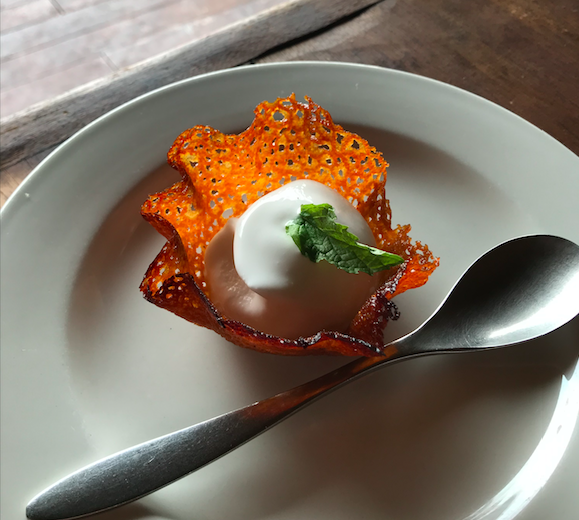
Pineapple and lemongrass sorbet. Image: Imogen Searra
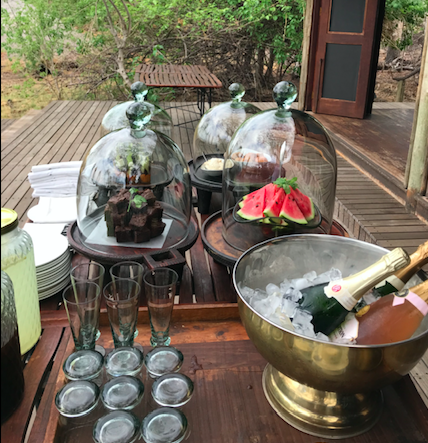
High tea snacks and sweets. Image: Imogen Searra
On our morning game drive, Gee and Ollie successfully tracked a male lion coalition, a white rhino, 14 female lions with cubs and a buffalo kill. It felt as if Botswana’s unforgiving heat pulled into the camp to coincide with the return of our game vehicle. The heat seemed to increase instantaneously and Nxabega’s crystal-clear pool beckoned. In addition to the cooling water, the pool overlooks the hippo’s watering hole. Feeling quite content to spend an undetermined amount of time wallowing, I fully understood why the hippo hardly leaves the cool refuge of his watering hole during the day.

We spent some time with a male lion coalition. This is one of the two brothers. Image: Imogen Searra
Nxabega is in the throws of the drought but the experience was in no way tainted. The wildlife sightings coupled with the first-class hospitality puts this camp at the top of my list of safari experiences. In addition, &Beyond’s three core values: to care for the animals, the people and the land helps to elevate its appeal.
&Beyond’s three core values
‘Care for the wildlife’ refers to the animal welfare programs that &Beyond runs, such as the translocation of rhinos from South Africa to Botswana. The company went into partnership with Great Plains and formed Rhinos Without Borders. Skipper Mareja, &Beyond’s Regional Resource Manager, explained that the goal of the partnership was to translocate 100 rhinos out of South Africa. To date there have been 87 rhinos successfully translocated but due to the drought that Botswana is facing and the dryness of the Delta, the decision to pause operations was made, until the drought is over.
Mareja is hopeful that the operations will resume in 2020, so long as the situation improves. The company is also involved in translocating leopards and cheetahs and facilitating in a lion breeding program. These are only a few of the projects &Beyond is involved in to protect and preserve Africa’s endangered species.
‘Care of the people’ refers to the initiatives within the company that are aimed at uplifting people. As well as the interventions of sustainable development in the nearby communities of Maun. Mareja explained that when the program began, many areas in Maun were investigated to identify where the company could help or where intervention was required.
They settled on a community on the outskirts of Maun where there was a need for a primary school. ‘The community wasn’t benefiting from the pre-primary government initiatives based on how far away they were from the nearest school’ said Mareja. After conducting situational analyses and coming up with a sustainable way to help, &Beyond followed the correct legal procedures to build a school within the community.
‘The way that we work with communities is that we go in and do things with them, not for them. This brings in an element of ownership. People take pride in the project, once you’ve participated in something, there’s a sense of ownership. This ensures that even after we’ve left that these projects are looked after,’ explained Mareja. Phase one of the school is complete and is due to open in the new school year.
Finally, ‘care for the land’ speaks to the style of the lodges that have a very small footprint. Their structures are semi-permanent and if the camp was to be taken down, it would be a seemingly effortless process. Nxabega is primarily built from biodegradable materials like wood and thatch and the raised structures allow animals to move freely underneath. This also allows the flora to flourish without interference. If the camp was fully removed from the area, the land would be able to restore itself, promoting the natural beauty of Nxabega’s surrounds.
Need to know
The best time to visit this camp depends on your preferences. Dry season in Botswana is in winter, from April to October. This is when the Delta floods. October is apparently a spectacular month for birding. Rain falls in Botswana’s summer months, between November and March, it is hot and humid at this time, I thoroughly enjoyed visiting in early December as the scattered thundershowers add to the excitement of the bush.
Cost: Prices start at R11,999 per person sharing. This includes accommodation, three meals daily, soft drinks, house wines, local brand spirits and beers, teas and coffees and refreshments on game drives, laundry, safari activities, emergency medical evacuation insurance, VAT, transfers to and from the lodge airstrip and park fees and a complimentary pair of Swarovski Optik binoculars per room for use during your stay. Nxabega also has unlimited WiFi throughout the camp.
Contact: andbeyond.com
In addition to fixed lodges, &Beyond offers mobile camping opportunities. The company sets up luxury camps for guests within national parks across Botswana for a maximum of 5 days, before having to break them down and move to a new area. With fixed expeditions, guests can book a 15-day trip that starts in Chobe National Park and moves to Savuti, Moremi, the Delta and then to the Makgadikgadi salt pans (only between November- April).









